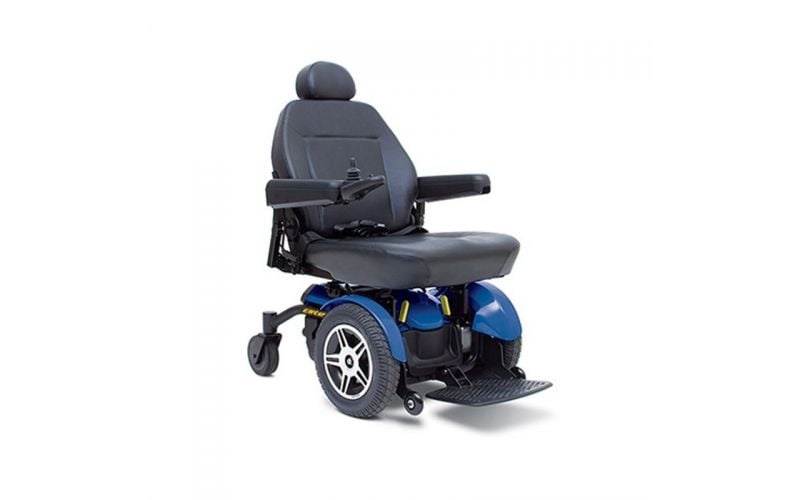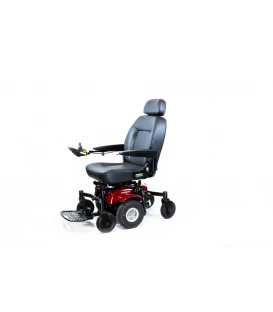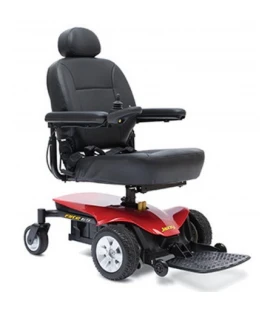Choosing the Right Power Chair: An In-Depth Guide

As we journey through life, certain circumstances may necessitate the use of a power wheelchair or power chair. Whether due to aging, injury, or disability, a power chair can significantly enhance mobility and independence. However, with so many options available in the market today, selecting the right one can be a complex task. This comprehensive guide aims to break down the process, equipping you with all the necessary information to make the right choice.
Understanding Power Chairs
A power chair is a motorized wheelchair designed to provide mobility for individuals who may have difficulty walking or are unable to walk. Power chairs are typically controlled using a joystick located on the chair's armrest and are powered by rechargeable batteries. They come in a wide range of sizes and designs, each with its own set of features tailored to different needs and lifestyles.
Types of Power Chairs
There are several types of power chairs available, including:
-
Front-Wheel Drive: These chairs are versatile and maneuverable at slower speeds. They perform well indoors and outdoors, but can be difficult to control at higher speeds due to the 'fishtailing' effect.
-
Rear-Wheel Drive: These chairs offer excellent control at high speeds and provide a smooth ride. However, they have a larger turning radius, making them less maneuverable in tight spaces.
-
Mid-Wheel Drive: Known for their tight turning radius, these chairs excel in indoor environments. They may, however, feel slightly unstable while moving at high speeds or transitioning from different surfaces.
Factors to Consider When Choosing a Power Chair
User's Physical Condition
The user's physical and health condition significantly impacts the type of power chair needed. For users with limited upper body strength or mobility issues affecting the hands and arms, a power chair with an easy-to-operate joystick and adjustable controls would be beneficial. Similarly, individuals with postural issues might require a chair with advanced seating options, tilt, or recline features.
Weight Capacity
Power chairs come with different weight capacities, ranging from 250 to 700 pounds. Select a chair that can comfortably accommodate the user's weight. Overloading the chair can compromise its stability and performance.
Seating and Comfort
Comfort is a crucial aspect of a power chair. Chairs come with different seating options – standard, captain's seat, and solid seat pan. A captain's seat offers the most comfort but may not accommodate all postural needs. On the other hand, a solid seat pan allows for customization with cushions and supports but might require professional assistance to achieve optimal comfort and support.
Maneuverability and Speed
Consider where the chair will be used most. For primarily indoor use, a chair with a tight turning radius is essential. For outdoor use, factors like speed, stability, and ground clearance become more important.
Travel Considerations
If you plan to travel with the power chair, portability becomes an important factor. Some power chairs can be disassembled into manageable pieces or are designed to be lightweight and compact for easy transportation.
Battery Life
The range of a power chair – how far it can travel on a single battery charge – varies significantly from model to model. Consider how frequently and how far you will be traveling. Most power chairs offer a range of 10-20 miles, but it's always better to opt for a longer range for greater flexibility.
Warranty and After-Sales Service
Choose a power chair from a reputable manufacturer that offers a comprehensive warranty. It's also crucial to have accessible after-sales service for maintenance and repairs.
The Cost Factor
The cost of power chairs can vary widely, depending on their type, features, and brand. While basic models can be purchased for around $1,500, high-end models with advanced features can cost over $5,000. Remember, it's an investment in quality of life, so it's essential to choose a chair that will meet the user's needs over the long term, even if it means a higher initial outlay.
The Selection Process
After considering the general factors, the selection process can be broken down into three steps:
-
Assessment: A thorough assessment by a healthcare professional, such as a physical or occupational therapist, is highly recommended. They can evaluate the user's physical condition, lifestyle needs, and environment to provide tailored recommendations.
-
Trial: If possible, try out different models. Just like test-driving a car, this allows you to get a feel for how each chair performs and assess its comfort and ease of use.
-
Purchase: Once you've identified a suitable model, check the warranty and after-sales services. It might be useful to purchase from a provider that offers servicing and maintenance.
Conclusion
Choosing the right power chair is about enhancing mobility and, by extension, improving the quality of life. It's a decision that requires careful consideration of the user's needs, lifestyle, and environment. By taking the time to understand the different types of power chairs and the key factors involved in choosing the right one, you can ensure a comfortable, practical, and durable mobility solution. The right power chair can offer unparalleled freedom and independence, opening up a world of possibilities for those who use it.














